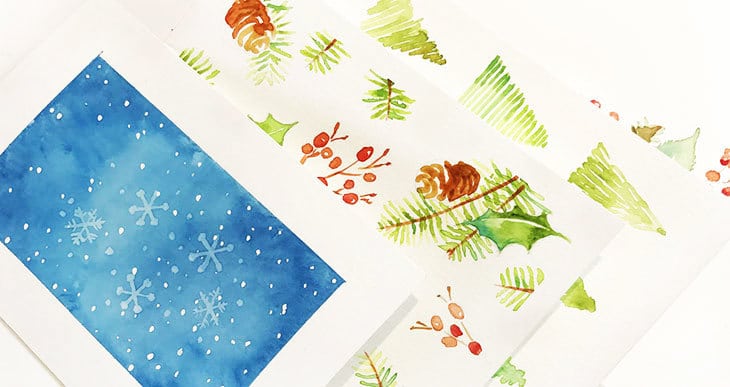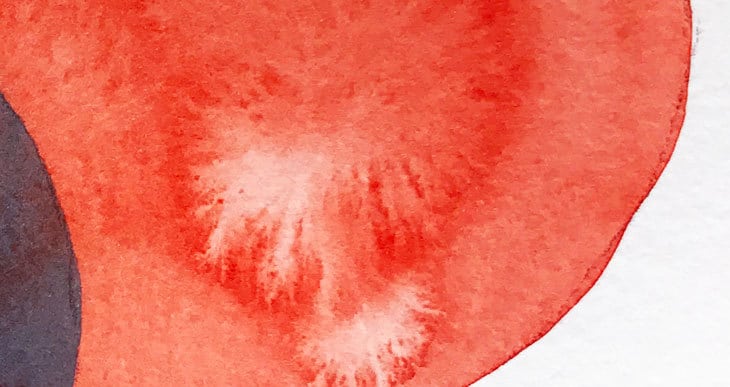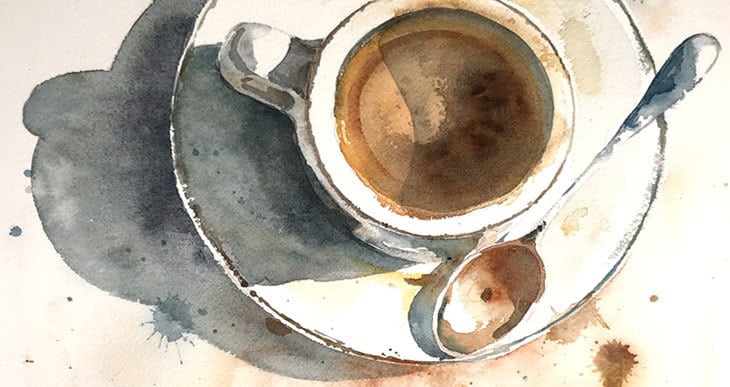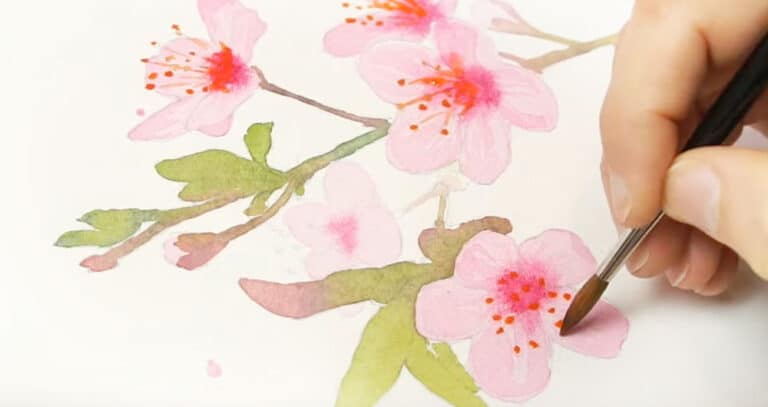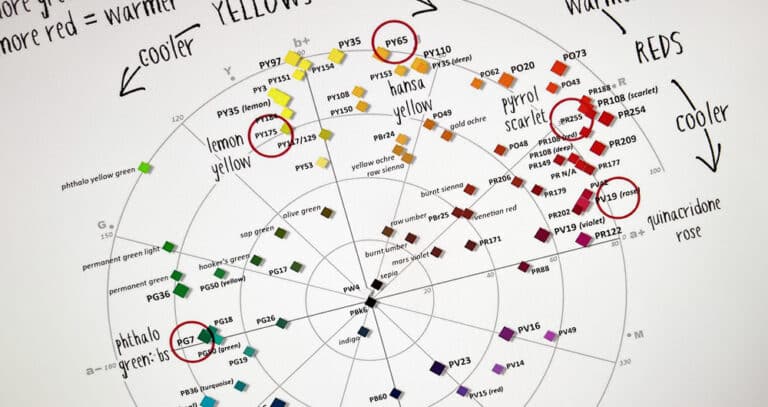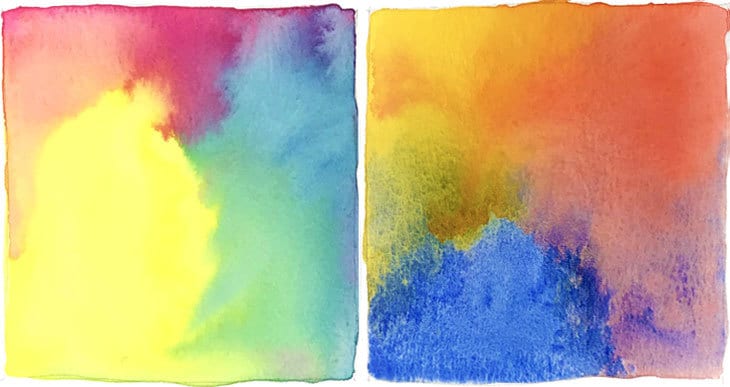A Solution to Smelly Masking Fluid?
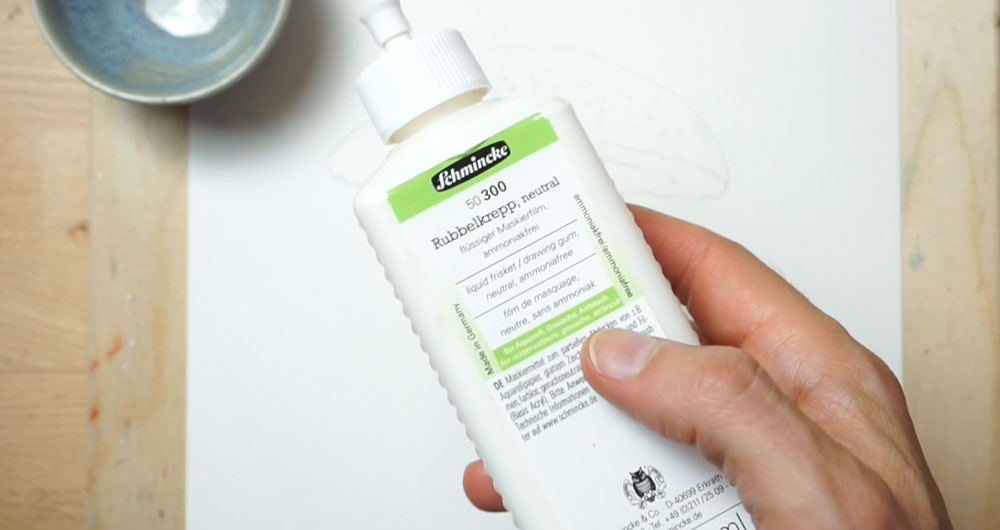
I get quite a few questions about masking fluid.
Frankly, it’s something I can’t live without (and once you start using it you probably won’t either!)
It’s just so darn useful when you paint in watercolors.
But one of the problems with masking fluid is the bad smell.
I recently discovered an “aroma-free” liquid masking fluid. I was amazed that somebody managed to make this product without an overpowering odor, and I have to say this is a big improvement on the products I used previously.
Why Does Masking Fluid Smell so Bad?
Masking fluid has a strong smell because it contains ammonia. Ammonia is used to stabilize the liquid solution so it remains consistent over time. It also functions as a preservative to prevent mold growth and improve its shelf life!
So this strong smelling ingredient plays a pretty important role.
But unfortunately for some folks the chemical smell makes it impossible to use. For example, Wendy sent me this comment:
“Unfortunately I can’t use masking fluid because it gives me a migraine!”
And I’m sure she’s not alone…
So I started doing some research and came across the fluid made by the brand “Schmincke”. They make a version of masking fluid without ammonia. And after testing its performance, I can say it works just as well as my previous choice (I used to recommend Pebeo Drawing Gum).
What is masking fluid made of?
Most masking fluid includes latex rubber, water, and ammonia in the ingredients. The latex is either natural plant-based, or synthetic. Some options also include a colored pigment.
Hence, this is a water-based medium that you can also dilute without affecting its ability to dry into a protective film.
I spoke with Schmincke to find out more about their masking product. Here’s what they told me:
“When formulating our masking fluid we focused on excellent removability, low odor and no hazard labeling required. Many binders used in masking fluids often require a stabilizer – this very often is the smelly ammonia. Unfortunately, ammonia is known to be quite a strong irritant. And even in low concentrations it can still be risky.
We found a binder that works well without ammonia. So, no safety labeling is required and no smelly odors”.
This is pretty good news for all watercolor artists 🙂
Even if you’re not particularly sensitive to chemical smells, it is far more pleasant to use odorless, non-irritating substances when you’re busy painting !
So from now on I’m changing my recommendations for liquid masking (or “frisquet” if you prefer).
My Choice for the best masking fluid for watercolor
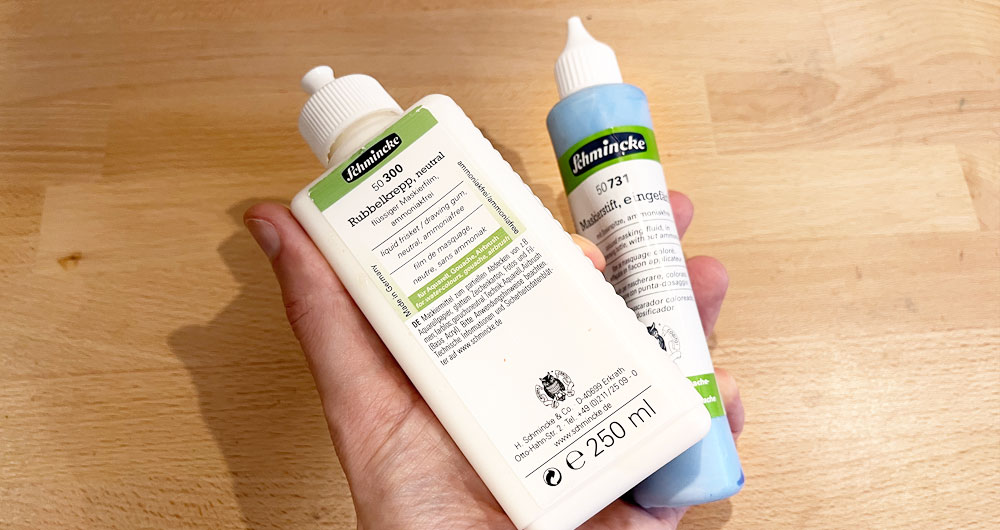
Schmincke odorless art masking frisket is the best choice if you want to avoid unpleasant odors.
Overall, masking fluid is inexpensive (thank goodness) and in my opinion, indispensable for watercolor painting!
Schmincke offers this masking fluid in different containers. You can also get this in neutral or colored options. The colored version makes it easier to see the shapes you paint onto the paper surface (Amazon links):
(Tip: the larger bottle costs a little more but is much better value)
Masking Fluid Alternatives
A student artist on my watercolor masterclass asked me the following question:
“Hi Anthony,
I have a slight problem. I’m unable to find masking fluid where I live , and wondered if there was an alternative method that I could use …”
Hmm… Some artists use a wax resist technique to preserve whites. You can get white artists wax crayons with a point like a pencil or use a sharpened white candle.
You can vary the amount of “resisting” by altering the pressure you put on the wax crayon. Hard pressure will leave the surface completely white, but soft pressure will let some of the paint reach the paper.
The texture of watercolor paper also makes the application of wax tricky. You can even melt some wax in a small bowl and use an applicator of some kind (don’t burn your fingers!)
I’m not a fan of wax because it permanently alters the surface of the paper (unlike masking fluid which can be removed when you like).
If you can’t find masking fluid I’ve seen some people use rubber cement (a kind of glue – called cow gum in the UK). This stuff is also latex based so when it dries it forms a rubbery surface that protects the paper. It also rubs off in a similar way to liquid masking.
But make sure you do a test on your paper first!
Happy Painting!
Anthony

